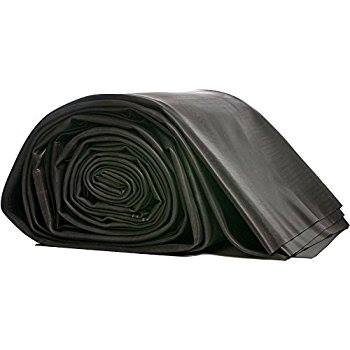Dams play a crucial role in water storage, irrigation, hydropower, and even flood control. To maximize their efficiency and longevity, a high-quality liner is essential. Among the various materials available, 0.5mm HDPE liners stand out as one of the best solutions for dam lining, offering excellent performance, cost-effectiveness, and environmental benefits.
In this article, we’ll delve deep into the advantages of 0.5mm HDPE liners, compare them with alternatives, explore their applications, and provide valuable insights on why they’re a top choice for dam construction and repair.
What Are HDPE Liners?
High-Density Polyethylene (HDPE) liners are durable, flexible geomembranes used to prevent seepage in containment systems. The 0.5mm thickness is particularly popular for its balance between affordability and functionality, making it an ideal choice for small- to medium-sized dam projects.
Why Choose 0.5mm HDPE Liners for Dams?
1. Durability and Longevity
HDPE liners are resistant to chemical degradation, UV radiation, and punctures, ensuring a lifespan of over 20 years in many cases.
2. Cost-Effectiveness
The 0.5mm thickness offers excellent performance at a competitive price point, reducing the overall cost of dam construction and maintenance.
3. Environmental Benefits
HDPE is a non-toxic material, making it safe for use in potable water dams, fishponds, and agricultural reservoirs.
4. Flexibility in Application
The lightweight nature of 0.5mm HDPE liners makes them easy to transport, install, and weld, even on uneven surfaces.
Technical Specifications of 0.5mm HDPE Liners
| Property | Specification |
|---|---|
| Thickness | 0.5mm |
| Material | High-Density Polyethylene (HDPE) |
| Tensile Strength | >17 MPa |
| UV Resistance | Excellent |
| Chemical Resistance | Resistant to acids, alkalis, and hydrocarbons |
| Life Expectancy | 20–30 years (with proper installation) |
Applications of 0.5mm HDPE Liners in Dams
1. Agricultural Dams
These liners are perfect for water reservoirs used in irrigation. Their impermeability ensures that precious water is not lost through seepage.
2. Fish Farming
0.5mm HDPE liners are safe for aquatic life, making them ideal for fish ponds and aquaculture projects.
3. Industrial Water Storage
Industries requiring large volumes of water for cooling or manufacturing processes benefit from the cost-efficiency of HDPE liners.
Advantages Over Alternative Materials
1. HDPE vs. PVC Liners
While PVC liners are more flexible, they are prone to chemical degradation and have a shorter lifespan compared to HDPE liners.
| Feature | HDPE Liners | PVC Liners |
|---|---|---|
| Durability | High | Moderate |
| UV Resistance | Excellent | Moderate |
| Chemical Resistance | High | Low |
| Cost | Affordable | Moderate |
2. HDPE vs. Concrete Linings
Concrete is a common choice for dam lining but is far more expensive and less environmentally friendly than HDPE liners.
Steps for Installing 0.5mm HDPE Liners in Dams
- Site Preparation: Clear and level the dam bed, removing any sharp objects that could puncture the liner.
- Liner Deployment: Roll out the liner carefully, ensuring no folds or wrinkles.
- Welding: Use hot wedge welding or extrusion welding to join liner sections.
- Anchoring: Secure the liner edges in anchor trenches to prevent movement.
- Inspection: Check for leaks or damages and repair them immediately.
Statistics Highlighting the Importance of HDPE Liners
- Water Loss Prevention: Unlined reservoirs lose up to 30% of stored water annually due to seepage. Installing HDPE liners can eliminate this loss.
- Market Growth: The global geomembrane market is projected to grow at a CAGR of 7.5%, driven by increasing demand for water conservation solutions.
- Cost Savings: HDPE liners reduce maintenance costs by up to 40% compared to traditional materials like clay or concrete.
FAQs About 0.5mm HDPE Liners
Q: Can HDPE liners be recycled?
Yes, HDPE liners are recyclable, making them an eco-friendly choice.
Q: What maintenance is required for HDPE liners?
Regular inspections and immediate repair of any damage are crucial for maintaining the liner’s integrity.
Q: Are HDPE liners suitable for high-temperature environments?
HDPE liners can withstand temperatures up to 120°C, making them ideal for most environments.
Choosing the Right Supplier for 0.5mm HDPE Liners
When selecting a supplier, look for:
- Experience and Expertise: Choose a company with a proven track record in geomembrane solutions.
- Quality Certification: Ensure the liners meet international quality standards like ASTM and ISO.
- After-Sales Support: Reliable technical support and installation guidance are essential.
Where to Buy the Best 0.5mm HDPE Liners for Dams
GeoMembrane Solutions and EnviroLiner Experts are leading suppliers of high-quality HDPE liners. Their products are durable, cost-effective, and backed by excellent customer support.
Case Study: Transforming an Agricultural Dam with 0.5mm HDPE Liners
In 2022, a farming community in Kenya faced severe water losses due to an unlined dam. By installing 0.5mm HDPE liners, they reduced seepage by 95%, ensuring year-round water availability for irrigation and livestock.
Ready to upgrade your dam with the best 0.5mm HDPE liners? Contact us today for a free quote or expert consultation! Don’t let water seepage drain your resources—invest in HDPE liners for a sustainable future
Originally posted 2024-11-26 13:57:23.

